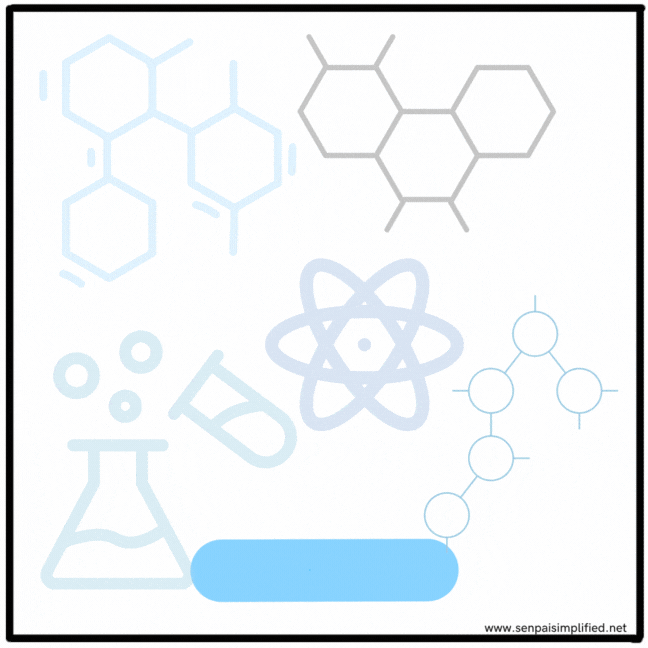Pyruvate has several fates after glycolysis. Pyruvate is the end product of glycolysis. The production of Pyruvate is the final step of glycolysis, which produces the second ATP of the pathway by substrate-level phosphorylation. This reaction is catalysed by pyruvate kinase (PK) and activated by fructose-1,6-bisphosphate. After glycolysis, the pyruvate may enter one of several pathways.
The fate of pyruvate depends on the following factors:
- Type of cell
- Energy State of the cell
- O₂ availability
Krebs’s Cycle
In cells capable of carrying out aerobic respiration, the pyruvate enters the Krebs’s cycle through an intermediate reaction.
This is the pathway that the pyruvate takes in a majority of the cells. The cells must be in a low energy state, with adequate supply of oxygen, and must contain mitochondria for it to enter this pathway. The Reactions of the Kreb’s cycle will be discussed in a separate article
Pyruvate⁻(3C) + NAD⁺ + CoA-SH —(Pyruvate DH Complex)–> Acetyl CoA(2C) + NADH + CO₂
Lactate Production
This pathway is also known as anaerobic glycolysis. This happens in RBCs because they don’t have mitochondria to carry out aerobic glycolysis.
In muscle cells, and to a limited extent, in the brain, lactate production can occur in the absence of oxygen. Accumulation of lactate in the body can be harmful as this can lead to lactic acidosis.
Pyruvate⁻ + NADH + H⁺ —(LDH)–> Lactate⁻ + NAD⁺
Cori Cycle
As mentioned above, since accumulation of lactate is harmful to the body, there also has to be a mechanism to remove the lactate from the blood. This is done by reconverting the lactate back to glucose by the process of gluconeogenesis, in the liver (Gluconeogenesis pathway will be discussed in a separate article). The formation of lactate in RBC and then travelling to the liver to be turned back into glucose which in turn will be turned back into lactate by RBC, resembles a cycle and this cycle is named Cori Cycle.

Alanine Production
Pyruvate can also be turned into Alanine though a transamination reaction. This happens in muscle cells when there is protein degradation. Similar to Lactate, Alanine should also not be accumulated in blood.
Pyruvate⁻ + L- Glutamate⁻ —(ALT)–> Alanine + α-Ketoglutarate⁻
Alanine Cycle
The Alanine transports the ammonia group from muscle cells to the liver. In the liver, the ammonium group is either incorporated into another compound to synthesize a non-essential amino acid, or turned into urea and excreted in urine. In the liver the Alanine is turned back into pyruvate which will turned back again, into glucose via gluconeogenesis. The cycle is termed the Alanine Cycle (A.K.A. Cahill Cycle).

Conversion to Oxaloacetate
As mentioned above, the end product of glycolysis, Pyruvate, can be turned back into glucose though a Pathway called gluconeogenesis. Pyruvate cannot directly enter the pathway. Therefore, Pyruvate must be turned into an intermediate in the Krebs Cycle called Oxaloacetate.
This reaction is catalysed by Pyruvate Carboxylase.
Pyruvate⁻(3C) + CO₂ + ATP —(Pyruvate Carboxylase)? Oxaloacetate⁻(4C) + ADP + Pi⁻




Leave a Reply